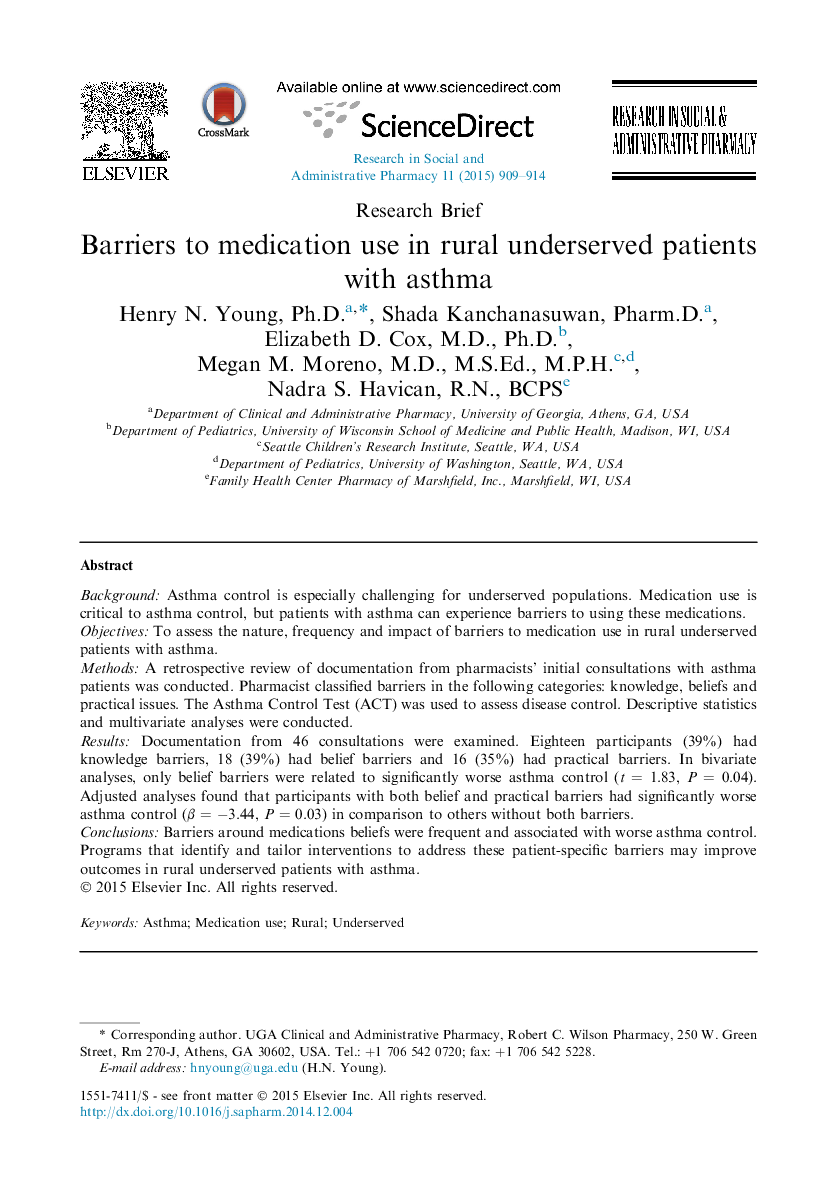| Article ID | Journal | Published Year | Pages | File Type |
|---|---|---|---|---|
| 2508309 | Research in Social and Administrative Pharmacy | 2015 | 6 Pages |
BackgroundAsthma control is especially challenging for underserved populations. Medication use is critical to asthma control, but patients with asthma can experience barriers to using these medications.ObjectivesTo assess the nature, frequency and impact of barriers to medication use in rural underserved patients with asthma.MethodsA retrospective review of documentation from pharmacists' initial consultations with asthma patients was conducted. Pharmacist classified barriers in the following categories: knowledge, beliefs and practical issues. The Asthma Control Test (ACT) was used to assess disease control. Descriptive statistics and multivariate analyses were conducted.ResultsDocumentation from 46 consultations were examined. Eighteen participants (39%) had knowledge barriers, 18 (39%) had belief barriers and 16 (35%) had practical barriers. In bivariate analyses, only belief barriers were related to significantly worse asthma control (t = 1.83, P = 0.04). Adjusted analyses found that participants with both belief and practical barriers had significantly worse asthma control (β = −3.44, P = 0.03) in comparison to others without both barriers.ConclusionsBarriers around medications beliefs were frequent and associated with worse asthma control. Programs that identify and tailor interventions to address these patient-specific barriers may improve outcomes in rural underserved patients with asthma.
